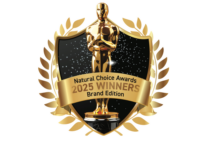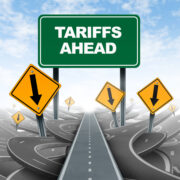One in four people—approximately 85 million Americans—avoid buying products that contain the top nine food allergens, according to a study commissioned by FARE (Food Allergy Research & Education). This includes 29 million who have a food allergy, 31 million with a food intolerance, and 25 million whose purchases are influenced by individuals with allergies in their household.
All told, FARE reports that food allergy consumers in the U.S. spend more than $19 billion on food products annually, and all signs point to continued growth in this category. Verified Market research posits that the global free-from food market, valued at $91 billion in 2023, will reach $170.54 billion by 2030.
“Even if you don’t have allergies or sensitivities, inevitably all of us are going to be putting together at a gathering—be it a kid’s birthday party, a family gathering, or a company event—where we have to make sure we’re accounting for a peanut allergy, or an intolerance to potatoes, or someone who has Celiac Disease,” says Trevor Connor, M.S., CEO, The Paleo Diet. “Accounting for all of these needs can get stressful. Being able to buy products that you know are allergen- and sensitivity-free—either through labeling or simply focusing on a diet that is naturally free from allergens and sensitivities—is going to have a real appeal over standing in a grocery aisle stressed out trying to decrypt nutrition labels and greenwashed marketing.”
Products free of major allergens also appeal to consumers following diets like Paleo, low-FODMAP and Whole 30. “People are realizing there is no such thing as a one-size-fits-all perfect diet,” says Nicola Wodlinger, CEO, mBIOTA. “Our reactions to food types can be as personal as a fingerprint, and can affect us in mysterious ways. Bad reactions to food don’t just give us tummy troubles. They can affect our mood, brain function, inflammation, energy levels, skin, gut microbiome, and more. Certain foods can drag us down in ways we don’t notice until they are gone. As people become more curious about the underlying causes of their discomfort and open to exploring the nuances of nutrition, they want products and diet frameworks that allow them to experiment with cutting specific ingredients and seeing what makes them feel better. When relapses and flare-ups happen, they are turning to medical nutrition like elemental diets as a first line response to get back on track. The ‘food is medicine’ revolution is well underway.”
Retailers are in a sweet spot to capture market share among consumers affected by food allergies—and the key is to foster a sense of safety and trust among customers. Many customers with food allergies and severe GI issues have spent years in and out of doctor offices, with symptoms dismissed and ignored, trying various medications and supplements to no avail-, says Wodlinger. "You will have to earn their trust. My best advice is to be a resource to them first, and a retailer second. Ask, ‘how can I help?’ and then listen to their answer before you act next. At its core, marketing is the art of solving problems for people.”
To keep your customers safe, it’s important to focus on a few factors:
Prioritize certifications. “If a free-from claim is going to be made on a product label, it should be third-party tested. This is especially true for allergens that can pose a serious safety risk,” stresses Wodlinger. “Companies should be able to provide batch-specific testing results, and clearly identify which products are from what batch. This allows for traceability and keeps consumers safe in the event of recalls.”
One trusted third-party certification to look for is Gluten Free Certified by Gluten-Free Certification Organization (GFCO). FDA and USDA also take food allergens seriously. “From 2004 to 2013, the number one reason for food safety recalls, according to the USDA, wasn’t foodborne illness contaminants, but food allergen cross-contact, which is when an allergen residue," says Connor. "There is a recognized certification that prevents food safety hazards throughout the supply chain called the Hazard Analysis and Critical Control Points (HACCP) and it is required by the FDA and USDA for several foods including meat, seafood, and juice. The HACCP certification is something I’d definitely look for. We also have a third-party verified Paleo certification that addresses many of these needs including gluten and dairy.”
FARE also offers certifications in allergy-friendly food safety practices, says Raveez Mohammed, Co-Founder and President, Festive Chickpeas. “One of the largest food safety training agencies offering training and certification is FARE, which offers Trained, Silver and Gold-level Partner levels for companies participating in their training programs.”
Lean into clear labeling. It’s mandated by law for labels to disclose whether the products contain one of the nine major allergens but certain practices, such disclosing the possibility of cross-contamination during production, can get confusing for consumers. “A clear ‘contains’ label is also vital to transparent communication with consumers versus a ‘may contain’ label which creates a lot of confusion in the market, especially in the gluten-free space,” says Channon Quinn, COO, Gluten Intolerance Group. “We spend a significant amount of time explaining to consumers the difference between a mandatory ‘contains’ statement in which allergens that are in fact contained within the product are disclosed versus a ‘may contain’ statement which is voluntary and does not mean that the product contains the suspected allergen. When it comes to someone with a food allergy that causes an anaphylactic response, consumers definitely feel differently.”
To that end, it can help to create a haven in the store stocked only with allergen-free products. “I love it when I see a retail store with a dedicated gluten-free shelf. I think this is a concept that can be expanded to allergen-free and other free-from needs,” says Connor. “Again, it’s important to make sure the products on those shelves truly belong there and certifications really help.”
Know manufacturing practices. Some brands stand out in their efforts to avoid cross-contamination, says Gael Orr, Marketing Director, Once Again Nut Butter. “For example, our peanut butter products are produced in a dedicated, SQF-certified facility, separate from where we manufacture our almond, cashew, and sunflower butters, plus tahini. In addition to undergoing constant external audits, we have a robust quality assurance program and state-of-the-art laboratories to monitor internal practices, food safety and food quality.”
Maiko Shimano, Director of Marketing, Calbee America, says Harvest Snaps are made in certified nut-free facilities. "Retailers can also look for brands that not only include mandatory allergen labeling but also include voluntary allergen information, such as ‘Packed on shared equipment with allergen X.’”
Train staff to be allergy allies. “Consumers are their own best advocates and should always take extra steps to ensure they verify the food safety and allergy friendliness of the products they intend to use by contacting customer service of the companies they plan to purchase products from, as many companies may not have access or be able to afford certifications, however they may already take steps within their company to secure their products,” says Mohammed. Likewise, store buyers and staff members should do the legwork to be able to answer their customer’s questions about the safety of products.
Also consider using your website and social media to connect with consumers with allergies, suggests Elisabeth Burrow, Founder, Jewels Under the Kilt. “Have a place on your website to share how to avoid allergens, offer allergy-friendly recipes, and promote brands that have done great things in this area.”
Another way retailers can support customers with food allergies: Adopt apps that make it easier for consumers to identify safe products, says Connor. “I think the SmartLabel program is a great idea. We’ve been talking with another company called Fig, or Food is Good, Inc., that has an app where you input your dietary preference and foods you can’t eat. It then scans barcodes on products at the grocery store and tells you whether you can buy them or not.”
5 Trends in Allergy-Friendly Foods for 2025
“Consumers shouldn’t have to sacrifice flavor in the pursuit of improving their diet," says Mohammed. "That’s why companies offering high-quality, allergy-friendly products, without compromising on taste, will be successful.” Here, trends our experts expect to be big in 2025.
Clean ingredients. “Surge in demand for all-natural ingredients continues unabated,” says Mohammed. “I think consumers will increasingly decrease their consumption of and shift away from sugar, artificial ingredients, and non-GMO products.”
Global flavors. Popularity in this space is growing, says Connor.
Heat & eat meals. “Convenience is king. People are eager to cross-examine ingredients and tailor meals to their body’s needs, but they also need a good answer for when life gets busy,” says Wodlinger. “We expect a demand for quick-draw meal replacements that don’t make people with allergies and intolerances have to choose between speed and safety.”
Nostalgic flavors. “Products that offer cleaner takes on childhood favorites are popular among adults looking to enjoy nostalgic flavors that fit in with a healthier lifestyle,” says Orr. “Once Again’s graham sandwiches, including our new chocolate and peanut butter flavor, meet this need by offering a certified organic and gluten-free alternative to traditional graham sandwiches.” The company also launched certified gluten-free cinnamon, honey, and chocolate graham crackers.
Crunchy classics. Classic comfort foods flavors like sour cream and onion ensure consumers don’t feel like they’re missing out, says Shimano. “Snacks featuring popular flavors like Harvest Snaps Tomato Basil, Crunchy Loops Sour Cream & Onion, and Crunchy Puffs Honey Dijon offer consumers the best of both worlds: a better-for-you, allergy-friendly snack that’s super tasty!” WF










